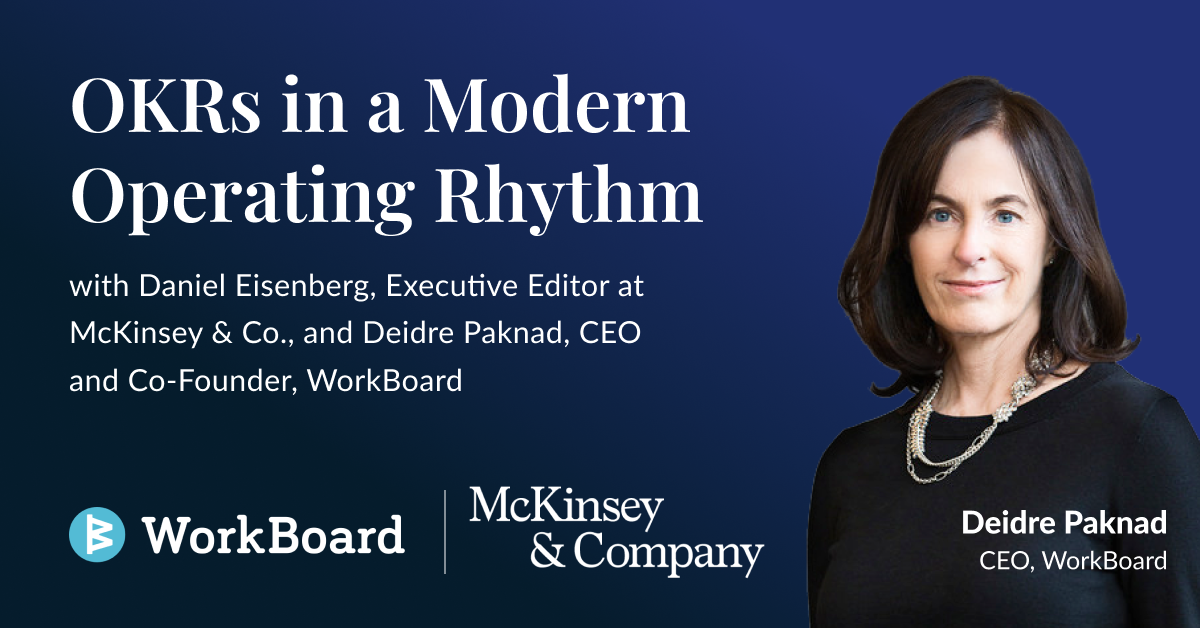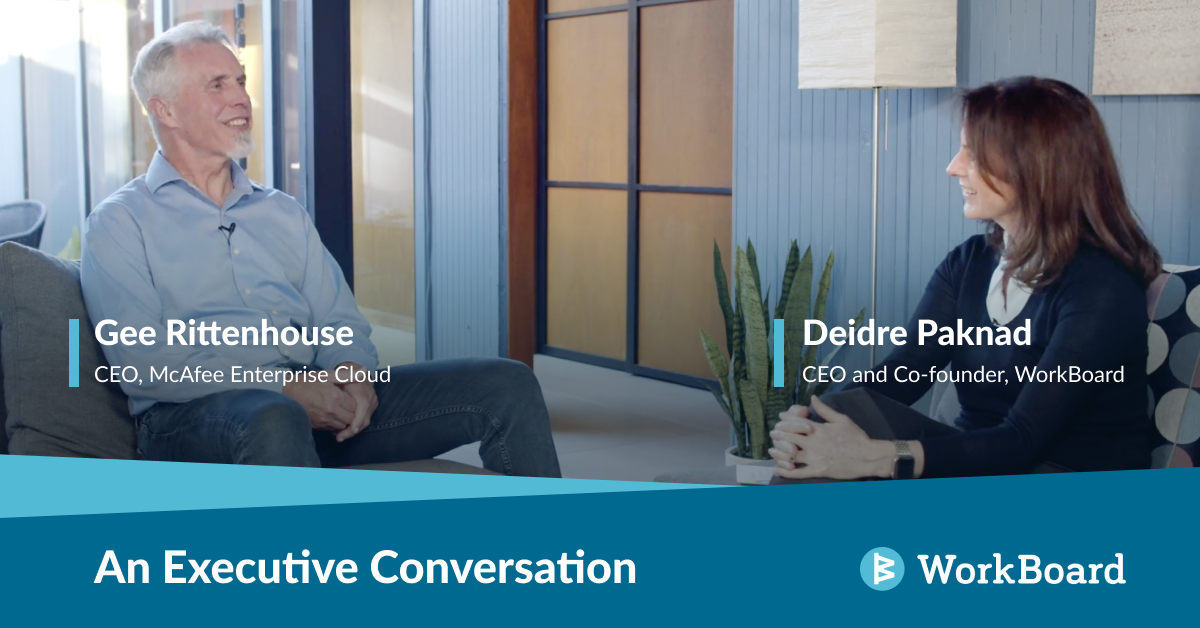Aligning on the strategy is a pre-requisite to executing on it.
Your strategy doesn’t live in isolation. It may line up to a company strategy or business unit strategy, or it may require other teams to create those strategies in unison with yours.
Because strategy attempts to define a future state, it must be both codified and re-evaluated on a frequent basis as markets and facts evolve. That’s where OKRs come in.
Strategy drives OKRs, but OKRs aren’t strategy
OKRs activate the strategy and define which parts of it we will execute in each quarter. They are a mechanism for aligning time and effort to the strategy right now. One of the pitfalls in simply stating the 5-year strategy is no one knows where to put their efforts in the next 90 days — OKRs drive clarity and alignment on what is first and most important in the near term to achieve your strategy in the long term.
Because OKRs focus on aligning outcomes, they help you avoid one of the largest strategy execution gaps: No one knows the outcomes needed and the output never adds up to strategic outcomes. The yellow side of the table below shows a typical strategy-activity path where tasks gets done but product and distribution don't improve. OKRs help teams think through the outcomes that drive strategy, as you see in the blue side of the table.
OKRs help us iterate forward with speed and agility toward our strategy as the world changes. They put the strategy into motion now and help you test assumptions. Strategy is a future destination; OKRs are the GPS that help you get to your destination.
Map your OKRs to the strategy, and — where appropriate — your key results to a given outcome. As you reset OKRs for a quarter, bring your strategy into the conversation: Did the key results prove or disprove your assumptions? What new risks arose? Are the results adding up to the long range outcomes as expected?
Strategy execution is purposeful achievement
When the long-range strategy drives current quarter objectives and results, and those OKRs in turn drive actions, organizations achieve their strategies. As simple as it sounds, most companies don't achieve their strategy because they don't intentionally drive the clear link between these elements — they leave it to chance.
More often than not, the strategy is not well understood below the senior leader level and has no impact on the week-to-week actions of the broader organization — this is a recipe for failure. (What did your last employee survey say about how well the strategy is understood?)
Strategy execution comes from a set of operating behaviors, rituals and actions that focus attention on the organization’s intention — its strategy. These collectively are the organization’s operating rhythm, and their purpose is to ensure its execution of the strategy.













